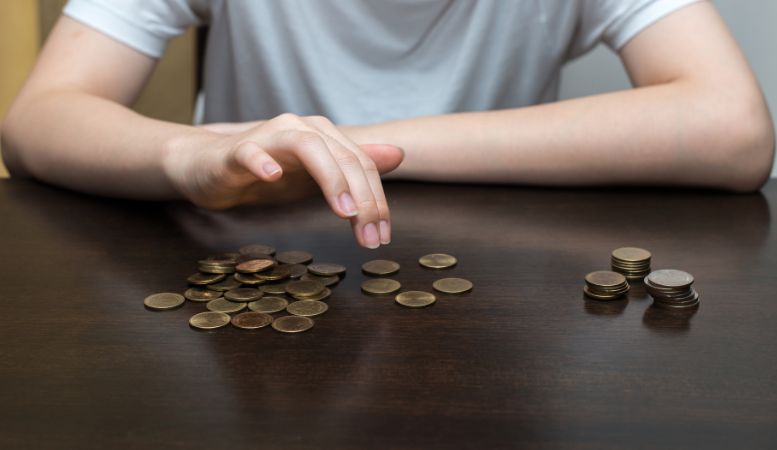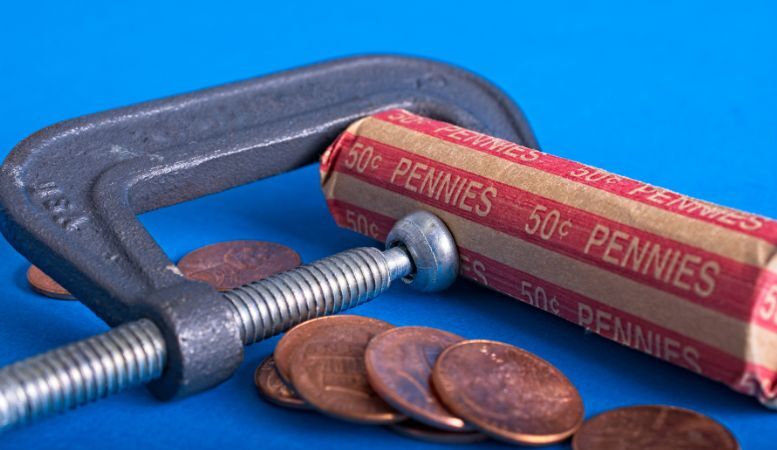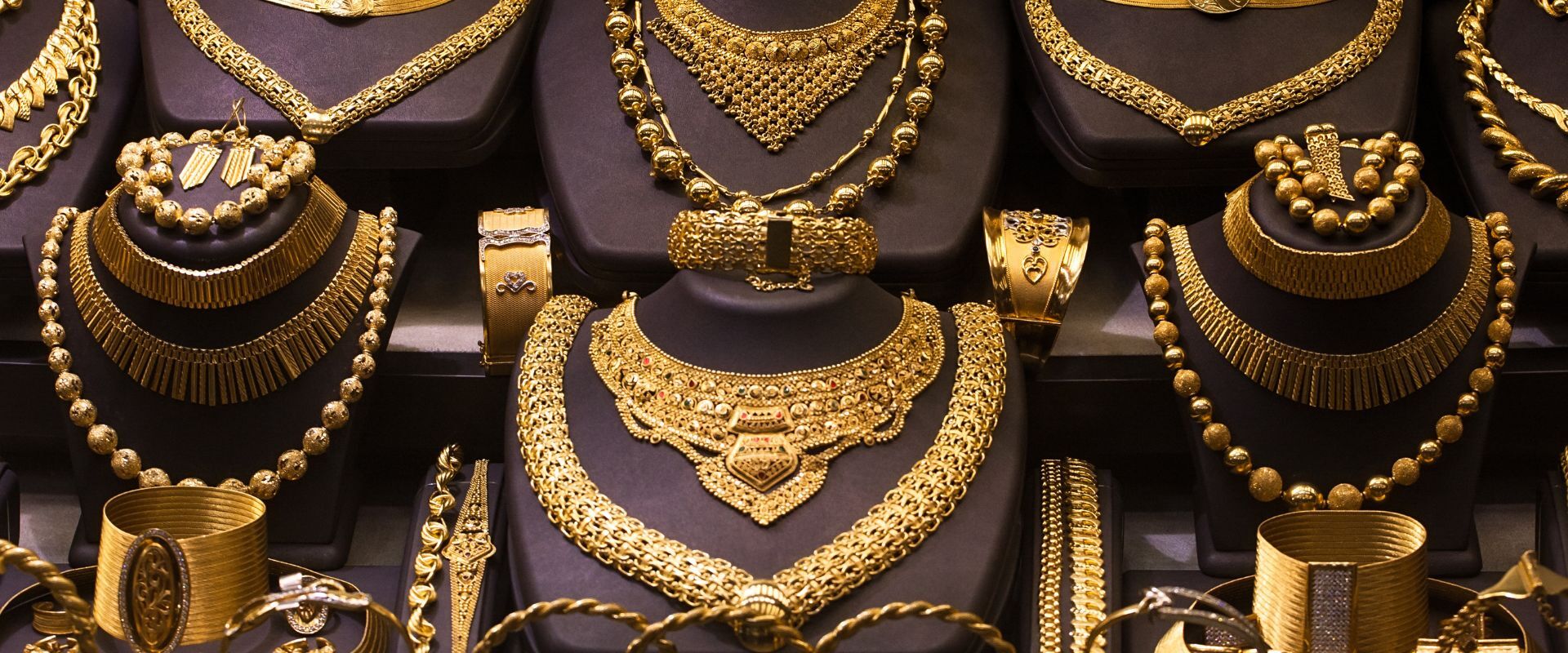Table of Contents
Coin rolling may seem daunting, but it shouldn’t be. If you have loose change lying around or valuable coins in your bullion portfolio, learning how to roll coins can help you become much more organized. You can bring your coin rolls to the bank to deposit funds or secure the rolls in a safe to protect your bullion.
You don’t need a coin roll machine for coin counting and rolling. By following a few simple steps, you can complete this easy process on your own and avoid the fees that come with using a coin sorting machine.
Whether you love coin collecting or often work with cash and have a lot of change, you’ve come to the right place. Below, we’ll discuss everything you need to know about rolling coins so you can safely secure your collection. If you’re interested in buying highly valuable gold or silver coins, shop our collection from Oxford Gold Group.
Gathering Your Loose Change
The first step in rolling coins is gathering your loose change. You may store change in various jars, piggy banks, or containers around the house. Since you’re going through the effort to roll your coins, be sure to gather everything you have into one place to maximize your returns.
We recommend checking your wallet, old purses, the center console of your car, cracks in the couch, bedside tables, junk drawers, and anywhere else you may drop a few coins. If you plan on rolling bullion coins, you likely already know exactly where all of your assets are, so you can go ahead and open up the safe to get ready.
After gathering all of your coins, it’s time to prepare your space. We recommend picking a large, flat table to work on.
You may also want to lay out a coin sorting mat to prevent the coins from getting damaged. Coin sorting mats can also stop items from rolling off the table. If you don’t have a sorting mat, you may use something like a dish-drying mat or towel instead.
Sorting and Counting Your Coins

Sorting and counting your coins in advance will help you know how many coin wrappers you need. We recommend first sorting by denomination; then, you can count how many coins you have in each pile. To sort by denomination, separate your coins into the following categories:
- Pennies
- Nickels
- Dimes
- Quarters
- Half-dollars
- Dollar coins
- Silver coins
- Gold coins
- Platinum coins
- Palladium coins
- Any other collector’s coins
Sort your piles by value, placing the lowest value on the left and the highest on the right. For example, you can place your stack of pennies to the left, followed by nickels, dimes, quarters, and so forth to the right. Doing so will help you keep track of each pile.
After you have sorted your piles, it’s time for coin counting. For efficient counting, we recommend creating piles of 10 coins per category. For example, if you have 50 pennies, you can create five piles of 10, so you can easily go back and count how many you have.
Go through and stack piles of 10 for all your coin denominations until you’ve counted all your coins. Once you complete your stacks, you’ll know how many coins you have, so you can begin wrapping.
Preparing Your Coin Wrappers
Before we dive into how to roll coins, you’ll need to prepare your wrappers. You can purchase coin wrappers from most local retailers, though some banks will hand them out for free if you ask.
Every coin denomination has its own type of wrapper. Odds are, you will at least need wrappers for pennies, nickels, dimes, and quarters, though you may also need half-dollar and dollar wrappers if you’re collecting bullion.
Many different brands create coin wrappers. You want to find options that are highly durable and easy to roll.
Some people prefer the preformed wrappers that are already tube-shaped, while others prefer flat wrappers. You can try out each type to decide which you like best. If you purchase the flat wrappers, you will need to prepare them by using your index finger to roll the paper; then, you can slide the coins in and fold the edges to secure the roll.
Rolling Pennies

You can finally begin rolling once you have your wrappers ready and your coins sorted. Each type of coin requires its own instructions, as the number of coins you can fit per roll will depend on the type of coin you’re rolling. With pennies, you can fit 50 coins per roll, and the total roll will equal $0.50.
Since you created 10-penny stacks earlier, this step should be straightforward. If you’re using preformed wrappers, insert the pennies one by one until you reach 10. If you’re using flat wrappers, you can place the full stack in at once before completing the folds.
Rolling Nickels
After you’ve finished rolling your pennies, you can move on to the stack of nickels. Nickels work almost the same as pennies, though you cannot fit as many in one roll since the coins are slightly larger. You can fit 40 nickels per roll, and each roll will equal $2.00.
Be sure to write the number of coins on each roll you complete, even if you’ve filled the roll. Writing the number and the total value on the outside of each roll will help you in the future, as you may end up with incomplete rolls.
Rolling Dimes

You can fit 50 dimes in one roll, just like you can with pennies. Because dimes are worth $0.10, one complete roll of dimes will equal $5.00.
If you have a lot of rolls by this point in the process, you may want to begin jotting numbers down on a sheet of paper to help keep track of things. Be sure to keep all your rolls in their original piles based on denomination.
Rolling Quarters
Once you get to your larger denominations, you can really start seeing your money add up. Forty quarters can fit into one roll, meaning the total value will equal $10.00. Continue rolling all of your quarters and writing the total numbers on the outside until you’ve finished your piles.
If you have half-dollars and dollars, here are the references:
- Half-dollars: 20 coins per roll, totaling $10.00
- Dollars: 25 coins per roll, totaling $25.00
After you’ve rolled all of your coins, you can calculate your total and then decide what you want to do with your stacks. You may deposit the rolls at your bank, store them in a safe, or continue saving them until you reach a certain goal.
Shop Valuable Coins From Oxford Gold Group Today
Now that you know how to roll coins, you can continue adding to your collection. At Oxford Gold Group, we sell the highest-quality gold, silver, platinum, and palladium coins that allow you to diversify your portfolio. Whether you want to add a unique coin to your collection or hedge against inflation, we can help.
Shop our coins today, or call Oxford Gold at (833) 600-GOLD if you have any questions.








